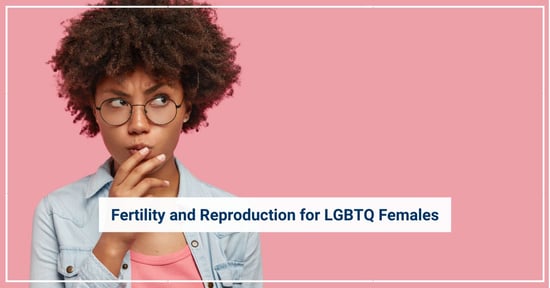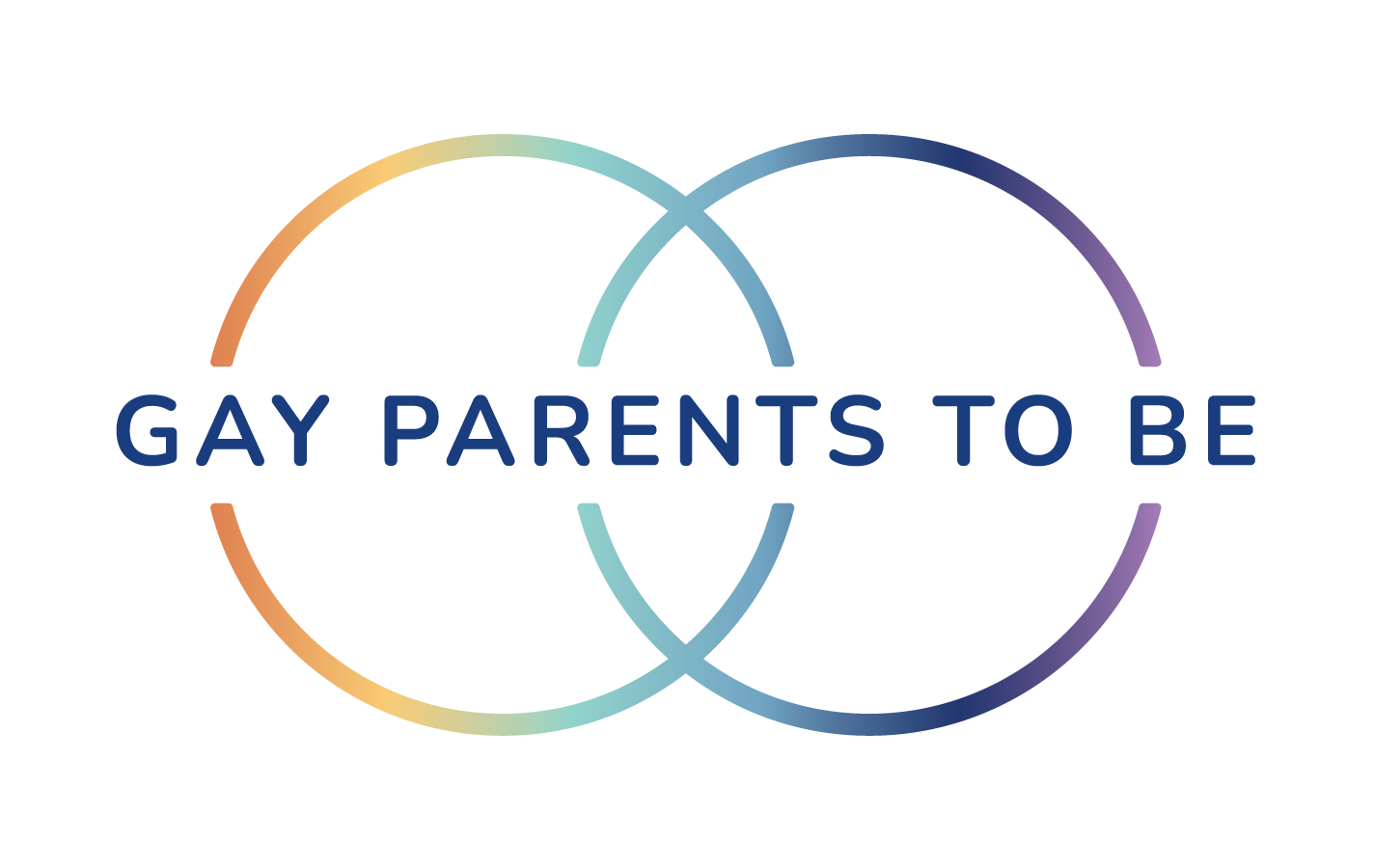
.jpg?width=1200&name=LGBTQ%20Female%20fertility%20(1).jpg) “So when are you going to have a baby?” “When am I going to have a grandchild?” “Tick tock, it’s your biological clock!” If you identify as a female over the age of 25, whether you’re single, partnered, or in a committed relationship with your pet (*cough* soul mate), you’ve probably heard some version of the questions above. Between close relatives, not-so-close relatives, and well-meaning friends, it might seem like the entire world is concerned with your future family - even if it’s not on your radar yet.
“So when are you going to have a baby?” “When am I going to have a grandchild?” “Tick tock, it’s your biological clock!” If you identify as a female over the age of 25, whether you’re single, partnered, or in a committed relationship with your pet (*cough* soul mate), you’ve probably heard some version of the questions above. Between close relatives, not-so-close relatives, and well-meaning friends, it might seem like the entire world is concerned with your future family - even if it’s not on your radar yet.
As a fellow twenty-something year old, I know that this subject is daunting. It can seem like information overload, especially if you’re not ready to have a family right now. However, as the saying goes, “knowledge is power,” and in this case, arming yourself with accurate information about reproduction and your own fertility can be the best way to empower yourself to make smart decisions about your future family. Not to mention it’s a great way to store away a few knowledge-based quips to answer those dreaded questions. Here at Gay Parents To Be and RMA of Connecticut, we have years of experience helping moms to be become moms and mamas, and we can’t wait to share that information with you. In this article we’ll dive into some basic fertility facts, as well as provide the low-down on your LGBTQ family building options.
To start with, it’s good to know the basics about the female reproductive system - that includes the vagina, ovaries, uterus, and fallopian tubes. Unfortunately, we’re not really taught a lot about reproduction as young adults, aside from what we learn in high school health class. Even if you’re not ready to grow your family now, it’s important to learn how things work - plus, you’ll learn that human reproduction is both an amazing and complicated process.
What Are The Steps to Conception?
So let’s start by talking about the uterus. The uterus has two fallopian tubes attached to it, each about 4 inches, and at the end of each fallopian tube are fingers called fimbriae. During a regular menstrual cycle, when you’re ovulating (around day 14 of your cycle, for those of you who are tracking at home), your ovary releases an egg, and those fimbria usher the egg into the fallopian tube.
In order to achieve pregnancy, sperm needs to pass from the vagina, through the cervix and the uterus, and meet that egg in the fallopian tube. If they meet there and the egg becomes fertilized, an embryo forms, and will begin dividing as it moves into the uterus. There, it will attach to the endometrium (aka the uterine wall). In order for this to occur, each step in this intricate dance needs to happen at just the right time. That’s why pregnancy rates are around 20-25% for couples trying regularly, even in couples where the woman attempting to conceive is at her reproductive peak!
How Does The Menstrual Cycle Work?
Many cisgender women experience a period, and you know (in theory) that they’re linked to your fertility. Here’s the inside scoop on the menstrual cycle. The average cycle is 28 days. The window of “regular cycles” is around 24-33 days, so if your period doesn’t seem to fit into that window, you may have what is called an “irregular cycle” - we’ll talk more about that later.
Most cisgender females have two ovaries. Each ovary has a lot of follicles, and each follicle contains an egg. Every month, one follicle will grow from its normal size (around 5mm) to twenty millimeters - this happens around day 14 of your cycle. Your body knows to bring up just one egg every month around the time that you ovulate.
If you’re trying to conceive, hopefully that egg is a good egg (pardon the pun), and it travels through your fallopian tube and connects with sperm. Around day 14-16 is the optimal window to try to conceive, whether you’re doing at-home inseminations or an in-office insemination cycle. If fertilization is successful, you’ll be able to tell through either an at-home or in-office pregnancy test around day 28 of your cycle.
Want to boost your fertility knowledge? Listen to this Fertility U podcast episode, featuring our own Dr. Spencer Richlin
What are Fertility Hormones?
Hormones really are the drivers behind the reproductive process - they make the menstrual cycle work. On day 1 of your cycle your brain releases hormones. The pituitary gland releases FSH (follicle stimulating hormone) and LH (luteinizing hormone), and the FSH affects the receptors in the follicles of your ovary, telling one to grow. The other 10-20 follicles receive signals to not grow - it’s a pretty amazing process.
The follicle that’s growing releases estrogen, which makes the uterine lining get thicker - a nice biological cushion for a potential embryo to implant into. As those estrogen levels get higher, it triggers your LH levels - and that’s what tells the follicle to release that egg, right around day 14. If you’ve ever heard of an at-home ovulation kit that you can get in any pharmacy, it’s testing for that high LH level. That’s when you know that your body is as “ready” as possible to conceive.
How Many Eggs Are You Born With?
Part of the difficult dance of conception is a numbers game. When you are in the womb (before you’re even born), you have 6 million eggs. At birth you have half a million to one million eggs. By the time you hit puberty, you will probably have around three hundred to five hundred thousand eggs. You’re born with a lot of eggs, but the reality is that there’s an attrition rate as each cisgender female gets older. As a rule, as your age increases, your egg supply decreases.
The menstrual cycle can be a well-oiled, intricate fertility machine, but there are a lot of moving pieces in the reproductive process. If just one of those pieces isn’t timed correctly, it can lead to a negative pregnancy test. And remember, while men continue making sperm as they get older, females are born with a finite number of eggs. That’s why increasingly, fertility doctors are recommending that you freeze your eggs or even just complete a baseline fertility assessment, so you can be armed with that information.
What Is The Optimal Fertility Age for LGBTQ Women?
As you now know, a lot of processes have to happen in order to achieve pregnancy. As a cisgender female, your “optimal age” for fertility is under 35. At that point, you have more eggs, and you have a higher chance that each egg will be chromosomally normal (23 chromosomes).
This average biological clock is not something to be scared of, but it is something to know about so you can be in control and prepared. There are many options for fertility planning and preservation, and many women are now able to choose when they are truly ready to be a mom. Options like egg freezing or doing an IVF cycle to take advantage of your optimal fertility age are great ways to plan for your future family.
If you’re above the age of 35, that does not mean that you’ve missed your chance! There are plenty of women who conceive past that point. However, if you do fall into that age category, we would recommend that you seek the advice of a reproductive endocrinologist. Trying at home can take precious time and resources, and a physician may advise you on the best course of action to optimize your personal fertility.
Other reasons that you might want to seek the help of a reproductive endocrinologist might be hormone issues, such as PCOS or endometriosis. These diagnoses can lead to irregular cycles, and a fertility doctor will be able to help you decide on the best plan for your future family building.
How Can I Optimize My Fertility?
Before you begin trying to get pregnant, there are some basic ways that you can optimize your personal health - that can help lead to not only a healthy pregnancy, but a healthy life and future child. Eating a healthful, balanced, diet, exercising regularly, reducing stress, and taking a prenatal vitamin are a good place to start.
Here at Gay Parents To Be and RMA of Connecticut, we know that being informed about your body and your fertility are the first two steps to family building, even if your future family is far down the road.
Emma served as Gay Parents To Be's Brand Specialist for many years, helping to build awareness of the brand not only as a direct path to parenthood, but also as a general resource for fertility information in the LGBTQ community.

